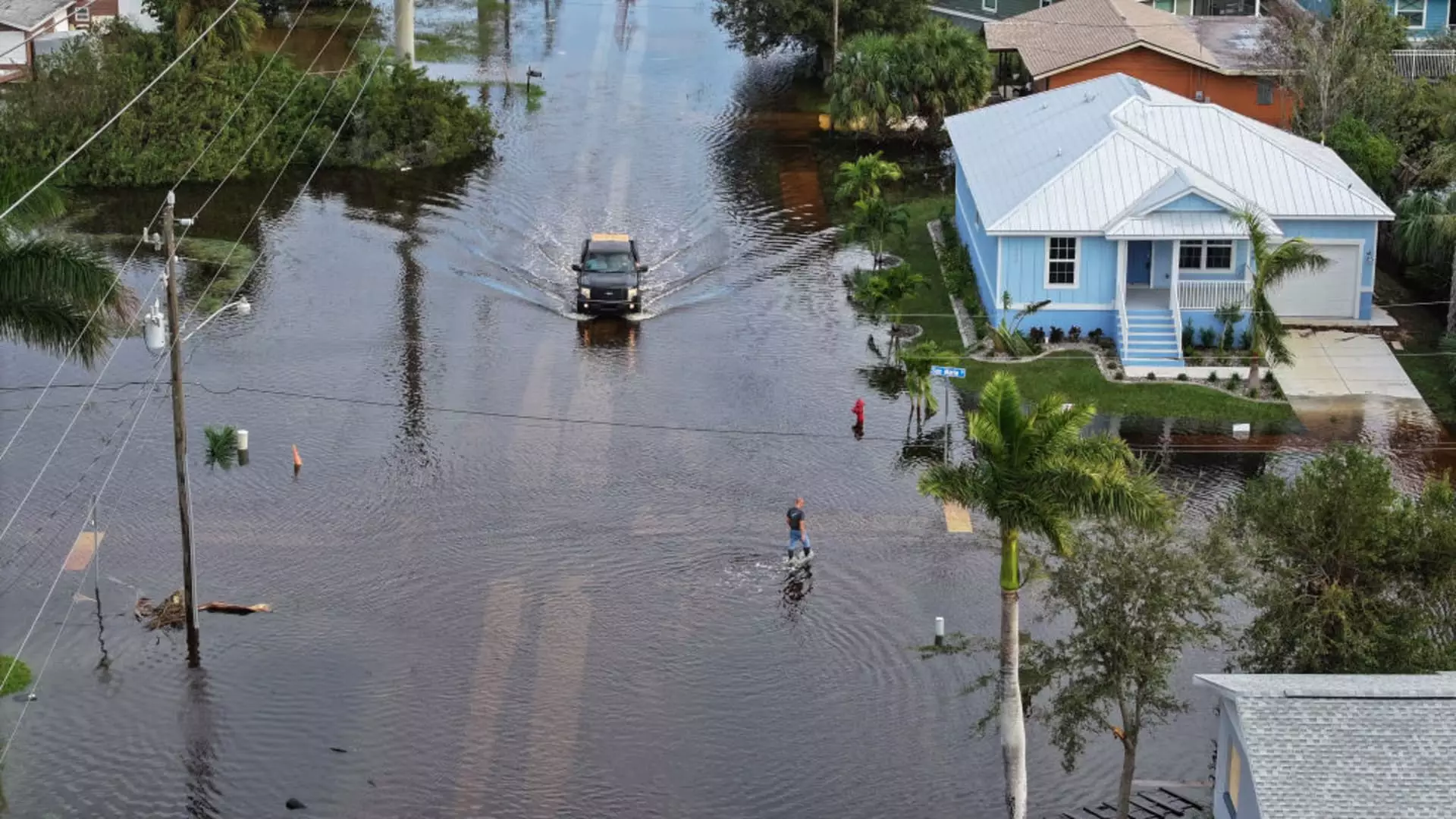As hurricane season rolls around yet again, we are reminded that the onslaught of nature’s fury is not just a distant concern—it’s a hard, looming reality. The National Oceanic and Atmospheric Administration has reported a staggering 60% chance of intensified hurricane activity this season, signaling that we might be facing one of the most impactful periods yet for coastal areas. With estimates that up to 19 named storms could develop—five of them potentially being major hurricanes—the urgency for homeowners to assess their insurance policies cannot be overstated.
It’s alarming to think about the potential devastation that can stem from these storms. Last year’s season alone inflicted $500 billion in damages, marking it as one of the most costly in history. Such astronomical figures should shake us out of complacency. We must ask ourselves: are we genuinely prepared or are we merely putting on a brave face while knowing deep down we are vulnerable?
Understanding the Importance of Insurance Reviews
Reviewing your homeowners insurance isn’t just a smart move; it’s a critical lifesaving measure that can determine your financial security in the aftermath of a hurricane. Charles Nyce, a risk management professor at Florida State University, drives home the necessity of a thorough review before calamity strikes. The crux of this preventive approach lies not only in documentation but in the realization that we might be significantly underinsured.
Many people mistakenly believe their policy limits will suffice. Yet, rising construction costs have rendered outdated policies an Achilles’ heel for many homeowners. Far too often, individuals fail to adjust their property value assessments, leaving them exposed and financially devastated should disaster occur. It is imperative to match policy limits with current replacement costs—especially given that construction costs have seen a staggering increase over the past few years.
This situation compels a blatant call to action for homeowners to not only review their policies but also to fundamentally understand what they entail. Insurance should provide reassurance; it must not simply exist as a trifling document tucked away until a crisis arises.
Deductibles: A Double-Edged Sword
The complexity of insurance does not end with policy limits; understanding deductibles requires equal scrutiny. It may seem tempting to lower monthly premiums by increasing deductibles, but this can be a perilous gamble. What appears to be a financial savior may unravel quickly when the wind howls outside your window.
A higher deductible means you will be responsible for a significant upfront payment before your insurance kicks in. If you raise your deductible from $1,000 to $2,500, it’s crucial to ensure that you can cover that additional cost in the event of a loss. Homeowners should tread carefully, as misjudging this balance can lead to devastating financial situations when a storm brews over the horizon.
In addition to standard deductibles, the potential for wind deductibles raises red flags especially pertinent to hurricane season. If your homeowner’s insurance stipulates a wind deductible that covers a percentage of your property value, the costs could reach into tens of thousands when you’re already grappling with the aftermath of a hurricane. This can leave you hunting for resources while grappling with the stress of repairs—an emotionally taxing endeavor made worse by the financial repercussions.
The Flood Insurance Necessity
While hurricanes make headlines for their winds, flooding often remains the unspoken hero of disaster damage, accounting for 90% of disaster-related losses. Surprisingly, most homeowners do not realize that standard policies usually exclude flood coverage. This leaves home and property owners at an even greater risk than they recognize. The statistics are stark—as demonstrated by Hurricane Helene’s catastrophic flooding in North Carolina, less than 1% of households in some of the hardest-hit regions were covered by flood insurance.
Homeowners must understand that flood insurance is not an optional luxury; it’s a necessity, especially before storm season fully materializes. Even if your home is not in a designated flood zone, the risk is real, and getting coverage through the National Flood Insurance Program must not wait until storms loom. The average 30-day waiting period for new flood policies is enough time for a budding storm to develop into a full-fledged crisis.
The meld of urgency and practicality in obtaining flood insurance cannot be understated. Understanding both the coverage limitations and the financial implications of inadequate protection will save countless homeowners from years of mismanaged worry.
Preparing for hurricane season deserves our immediate, thoughtful attention. Acts of nature come without warning, but our responses to them can showcase our readiness. Being cavalier about insurance policies can have dire consequences. As the winds begin to howl, it is vital that our defenses—both physical and financial—are utterly fortified.

